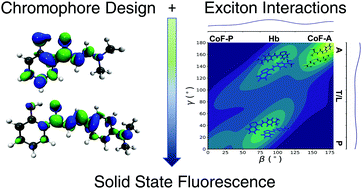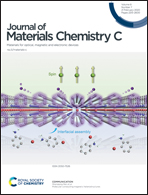Molecular and crystalline requirements for solid state fluorescence exploiting excited state intramolecular proton transfer†
Abstract
Aggregation induced emission offers a route to the development of emissive technologies based on solely organic systems. However, maximising fluorescence quantum efficiencies (QE) is a formidable challenge in attaining first-principles materials design, due to the interplay between the electronic structure of the chromophore and the morphology of the material. The identification of radiative and nonradiative channels, and how these are affected by aggregation, can rationalise emissive properties and aid in the design of yet more efficient fluorophores in the condensed phase. In the current work, we examine the mechanism behind the solid state luminescence enhancement in two related families of compounds with lasing properties, which undergo excited state intramolecular proton transfer (ESIPT). We systematically investigate competing excited state decay channels in a total of eleven crystals to evaluate the factors needed for efficient ESIPT fluorophores, aided by a full evaluation of the crystal structures, exciton coupling, and exciton hopping rates. We show that in addition to the restriction of nonradiative pathways, an efficient ESIPT is essential to maximise the QE in the solid state. This extensive study of structure–property relationships for fluorophores based on the ESIPT mechanism bridges the understanding of molecular photophysics with crystal structure, accelerating the development of highly efficient solid state emitters.



 Please wait while we load your content...
Please wait while we load your content...